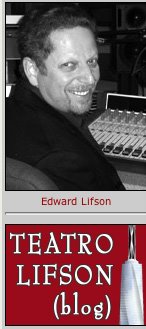
It's perplexing how the American Revolution, one of greatest dramas of human history, descends on film into a sort of
Waiting for Guffman theatrics. America's founding fathers are inevitably reduced to pious icons, dimensionless ghosts moving through the treacherous, uncertain events of their day as if it were a sleep-inducing pageant.
A rare exception is the current PBS American Experience documentary,
John and Abigail Adams, and the reason boils down to a single performance, that of Tony award-winner
Simon Russell Beale as John Adams. Despite his pivotal role in arguing for and securing American independence, Adams is probably most often remembered as a rotund, would-be monarchist whose worked as a diplomat in Europe was overshadowed by Franklin, and who had the dubious distinction of being the first American President to be rejected for re-election, his one-term a biding-the-time break between the A-List administrations of Washington and Jefferson. It's Samuel Adams that gets the most airplay today, and that's through a beer commercial.
The PBS film, drawing heavily on the correspondence between Adams and his wife and collaborator Abigail, capably portrayed by Linda Edmond, is obviously intent of restoring Adams to his proper place in our history. It's capably done, but it's Beale, who's just taken over the role of King Arthur in Broadway's
Spamalot, who makes the project transcend its genre.
He gives us a John Adams affording full measure to his irascibility, his stubbornness, his vanities and frustrations. Agitating for independence when others counsel moderation, struggling with the demands of diplomacy, watching as his Vice-President's role in the Senate is reduced from participant to onlooker, even pitching hay with the workers on his farm while in political exile, Beale makes Adams so visceral that it's as if you're standing beside him, feeling the heat radiating from his body and his energy displacing the air around you. You suddenly experience history, not as the usual inevitable progression seen through a thick, cloudy glass of history, but as a succession of lived moments - so familiar in our own daily lives - where nothing is certain, little settled, and achievement comes only from the constant anxiety, frustration and hope of human interaction. If John and Abigail were a feature film, Beale's work would be worthy of an Oscar.
Tonight, Saturday, February 4th at 9:00 P.M., you can catch a rerun of John and Abigail on Northwest Indiana's PBS outlet, WYIN, which is carried on many Chicago cable outlets. If you're home during the day or awake at odd hours,
WTTW will be repeating the show at 1:00 A.M, 5:00 A.M, 9:00 A.M. and 1:00 P.M on Monday, February 20th. You can also
order it is on DVD from PBS.


























